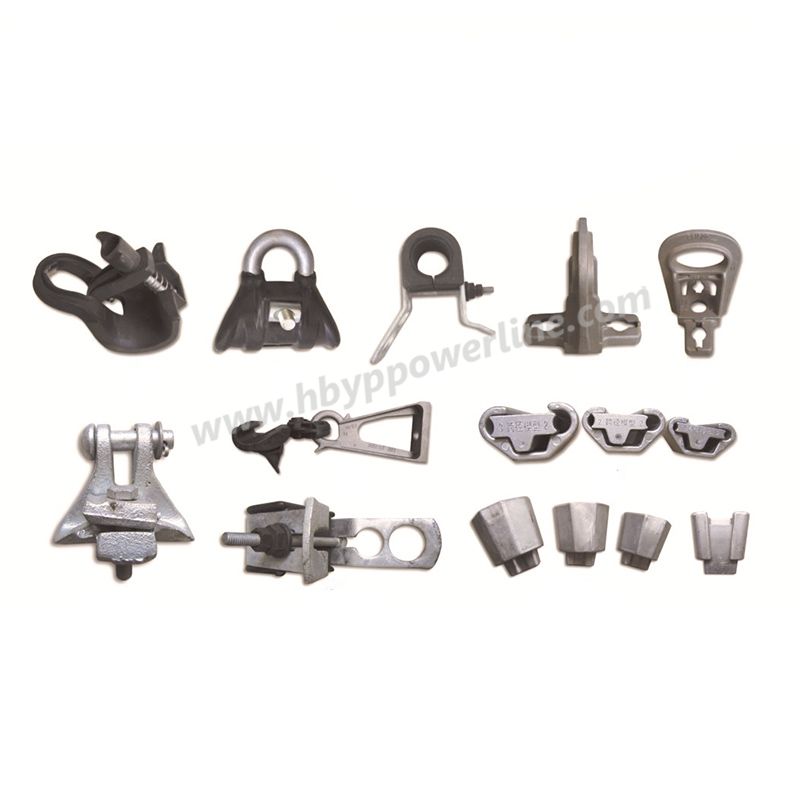- Automobiles & Motorcycles
- Beauty & Personal Care
- Business Services
- Chemicals
- Construction & Real Estate
- Consumer Electronics
- Electrical Equipment & Supplies
- Electronic Components & Supplies
- Energy
- Environment
- Excess Inventory
- Fashion Accessories
- Food & Beverage
- Furniture
- Gifts & Crafts
- Hardware
- Health & Medical
- Home & Garden
- Home Appliances
- Lights & Lighting
- Luggage, Bags & Cases
- Machinery
- Measurement & Analysis Instruments
- Mechanical Parts & Fabrication Services
- Minerals & Metallurgy
- Office & School Supplies
- Packaging & Printing
- Rubber & Plastics
- Security & Protection
- Service Equipment
- Shoes & Accessories
- Sports & Entertainment
- Telecommunications
- Textiles & Leather Products
- Timepieces, Jewelry, Eyewear
- Tools
- Toys & Hobbies
- Transportation
What is the function of suspension clamp?
A suspension clamp is a type of hardware used in various industries, primarily in the fields of electrical and telecommunications. Its main function is to support, secure, and suspend cables, wires, or other objects from a supporting structure, typically a pole, tower, or overhead line system. The key functions and purposes of a suspension clamp are as follows:
Cable or Wire Support: One of the primary functions of a suspension clamp is to provide support and stability to cables or wires. It ensures that these cables are held securely in place, preventing them from sagging, swaying, or coming into contact with the ground or other objects.
Prevent Cable Damage: suspension clamps help prevent damage to cables and wires by keeping them at a safe distance from potential hazards such as the ground, vegetation, or other structures. This is crucial for maintaining the integrity and functionality of the cables.
Maintain Tension: In overhead line systems, such as power distribution lines or telecommunication cables, suspension clamps play a critical role in maintaining the appropriate tension in the cables. Proper tension is necessary to ensure the efficient transmission of electricity or signals.
Distribute Weight: Suspension clamps distribute the weight of the suspended cables evenly across the supporting structure. This even weight distribution helps prevent stress concentrations and structural damage to the pole or tower.
Prevent Swinging and Vibrations: Cables and wires can naturally sway or vibrate due to wind, temperature changes, or other external factors. Suspension clamps help dampen these movements, reducing the risk of damage or interference with other nearby cables or equipment.

Aesthetic Considerations: In addition to their functional role, suspension clamps are often designed to be visually unobtrusive. They contribute to the overall aesthetics of electrical and telecommunication infrastructure by keeping cables neatly arranged and out of sight when possible.
Versatility: Suspension clamps come in various designs and sizes to accommodate different types and sizes of cables or wires. This versatility allows them to be used in a wide range of applications, from power transmission lines to fiber optic cables.
Easy Installation: Suspension clamps are typically designed for straightforward installation. They come with the necessary hardware, such as bolts, nuts, and washers, making it relatively easy for technicians or installers to secure cables in place.
Maintenance Access: By suspending cables and wires at an accessible height, suspension clamps make it easier for maintenance crews to inspect, repair, or replace the cables when necessary. This accessibility is essential for the upkeep of electrical and telecommunication networks.
Safety: Ensuring that cables are properly suspended and secured with suspension clamps contributes to overall safety. It reduces the risk of accidents, such as cable failures, electrical shorts, or signal disruptions.
In summary, Suspension Clamp for Overhead Lines serve a crucial role in various industries by providing structural support, maintaining cable tension, and preventing damage to cables and wires. They play an integral part in the functionality, safety, and aesthetics of electrical and telecommunication infrastructure, making them essential components for maintaining reliable and efficient networks.
If you are interested in sending in a Guest Blogger Submission,welcome to write for us!




Comments
0